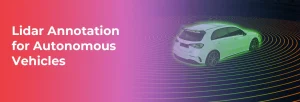ADAS Car Data Collection: Safety and Innovation in Autonomous Driving
The Advanced Driver Assistance System is a crucial extension of the automobile industry. It aims to improve the safety, reliability, efficiency, and overall driving experience. ADAS car data collection underlies the operation of these systems. In this blog post, we will explore why ADAS data collection matters, the steps involved therein, the hurdles faced as well as what tomorrow holds for this area. Based on insights from multiple sources, we shall discuss how Macgence is leading the way when it comes to innovations in ADAS car data collection that are set to shape future autonomous cars.
What is ADAS?
In an Advanced Driver Assistance System, sensors and cameras are used along with automated technology to reduce driving errors. Whenever a nearby object or vehicle is detected, an alert is raised to the driver which helps them to take necessary actions. These systems can be used in cars, trucks, farming vehicles, buses, and other similar vehicles. These models are trained after a thorough ADAS car data collection.
The Importance of ADAS Car Data Collection
These advanced systems cannot be developed or optimized without relying fundamentally on the availability of adas car data. Here’s why:
Safety Enhancement: Having comprehensive information allows the creation of accident prediction and mitigation systems that dramatically improve road safety.
System Improvement: Constant ingestion of information helps refine algorithms powering ADAS devices making them more efficient and reliable in their functioning.
Regulatory Compliance: For strict safety regulations one needs vast amounts of information to prove that their adas functions are effective.
User Experience: Reliable information regarding adas functionality guarantees seamless interactions with other vehicle systems while making the user’s ride convenient.
Methods of ADAS Data Collection
Sophisticated methods involving different tools are used for ADAS car data collection. Here are some common techniques:
1. Sensors & Cameras: Sensors and cameras form the foundation of ADAS car data collection. Light Detection and Ranging sensors (LIDARS), Radars, and more are used along with some specialized cameras to automate the vehicles.
2. Telematics Systems: This system aims to collect information related to the behavior and health conditions of the driver, the performance of the vehicle, along environmental conditions. All this information is sent to the central server present in the ADAS for further analysis.
These collect information about driver behavior, environmental conditions, and vehicle performance which is then sent to central servers for analysis.
3. Crowdsourcing: Multiple vehicles produce a range of driving situations hence it is important to aggregate such data thereby improving adas’ robustness.
4. Simulation Data: Besides training and testing ADAS algorithms, simulating driving conditions and scenarios can provide additional data.
Challenges in ADAS Data Collection
ADAS data collection poses numerous challenges that must be overcome despite its central importance:
Data Quality: Ensuring accurate and reliable collected data is crucial while poor quality ones could lead to wrong conclusions by the adas system thus endangering lives.
Data Volume: The amount of information produced by cars equipped with ADAS technology can be enough to confuse anyone. There is a need for an effective infrastructure for managing this type of information in terms of storage, processing as well as analysis.
Privacy Concerns: It is quite clear that collecting both vehicle as well as driver details has serious privacy implications; therefore, consent should always be sought when using these types of databases.
Cost: Building comprehensive sensing, storing & processing capacity infrastructure may require substantial investment.
Future Trends in ADAS Data Collectio

A few trends are shaping the future generations of ADAS data collection:
Edge Computing: By doing so we reduce latency and bandwidth utilization bringing about real-time decision-making at the edge (within the car itself).
Artificial Intelligence: AI and machine learning algorithms are becoming key to the examination of massive amounts of data, finding out trends, and making predictions.
5G Connectivity: The beginning of 5G technology brings about fast and reliable transmission of data. Thereby enhancing a smooth interaction between vehicles and central servers.
Blockchain for Data Security: The use of blockchain technology could result in better data security and reliability. That will solve privacy concerns as well as protect against data tampering.
How Macgence Leads in ADAS Data Collection
At Macgence, we ensure that we remain ahead in terms of ADAS data collection. Our method integrates advanced tech, in-depth knowledge of industry practices, as well as our commitment to safety and quality. Below is how we stand apart:
Comprehensive Sensor Integration: For purposes of capturing high-fidelity information, we use numerous sensors including advanced LiDARs and radars.
Robust Data Management: Leveraging cloud computing technologies along with edge computing systems helps us provide effective storage, processing, as well as analysis for the vast amount of data collected using our data management solutions.
Focus on Data Quality: We give importance to accuracy and reliability when it comes to managing information by maintaining strict validation procedures that are aimed at ensuring the highest quality standards.
Privacy and Security: This means we have to employ strong measures towards protecting users’ details. Which must be consistent with relevant regulations set or even built into law. Regarding this field while safeguarding individual personal details from unauthorized persons.
Collaboration and Innovation: Staying ahead in ADAS invention involves working closely with top automakers; technology providers; and agencies among others shaping these fields.
Conclusion
ADAS car data collection is a cornerstone of modern automotive technology, driving advancements in safety, efficiency, and user experience. With this understanding, we can pave the way to the next generation of self-driving cars by knowing why we need to collect ADAS data today or what challenges are faced during this process as well as current trends shaping these areas. Thus Macgence leads this transformation through innovative solutions that guarantee top quality standards regarding quality level /standards/, security measures, and performance effectiveness.
For more information on how Macgence can assist with your ADAS Car data collection needs. Visit our website or contact our team of experts today. Drive into the future with cutting-edge Advanced Driver Assistance System solutions from Macgence.
(FAQs)
Ans: – Autonomous driving relies on gathering accurate ADAS records required during training and validating algorithms implemented by them. Thus ADAS helps self-driven cars gain valid knowledge about their environment and make choices that ensure safety.
Ans: – This comprehensive dataset helps in developing robust and reliable ADAS features. It involves capturing different kinds of data such as sensor (LiDAR, radar, camera) data, vehicle performance data, driver behavior recording, and environmental-related information for example.
Ans: – Data validation mechanisms like rigorous testing processes. A variety of state-of-the-art sensors; and good data management systems form its core competence as far as ensuring high-quality standards in its information is concerned because it focuses on the accuracy and reliability of facts especially when connected with modern technology.
You Might Like
October 11, 2025
Why Your AI Can’t Understand Humans: The Multimodal Conversations Datasets Gap
Your conversational AI is failing, and you probably don’t know why. It responds to words perfectly. The grammar checks out. The speed is impressive. But somehow, it keeps missing what users actually mean. The frustrated customers. The sarcastic feedback. The urgent requests are buried in casual language. Here’s what’s really happening: your AI is reading […]
October 10, 2025
Why Your Self-Driving Car Needs Perfect Vision: The LiDAR Annotation Story
Imagine you’re driving down a busy street. Your eyes are constantly scanning – pedestrians crossing, cars merging, cyclists weaving through traffic. Now imagine teaching a machine to do the same thing, except it doesn’t have eyes. It has lasers. And those lasers need to understand what they’re “seeing.” We’ve seen many product launches that aim […]
October 9, 2025
What is Synthetic Datasets? Is it real data or fake?
Picture this: You’re building the next breakthrough AI product. Your models need millions of data points to learn. But there’s a problem. You can’t access enough real-world data due to various factors, such as compliance issues, security factors, and specific needs. Privacy regulations block you. Collection costs are sky-high. And even when you get data, […]




